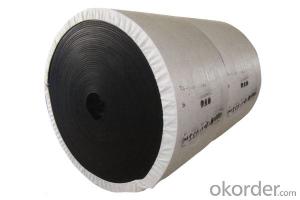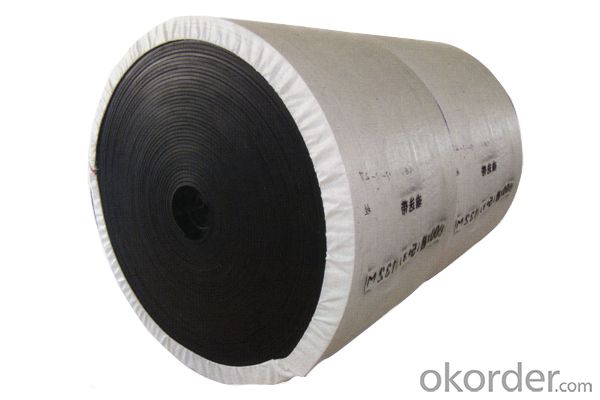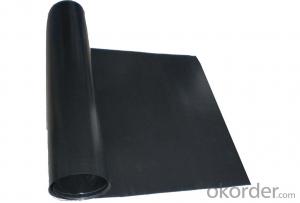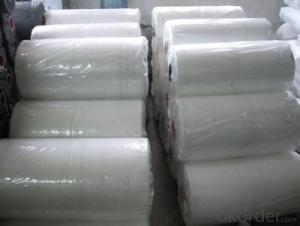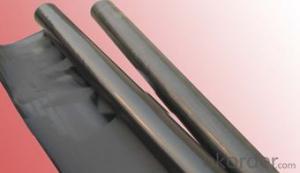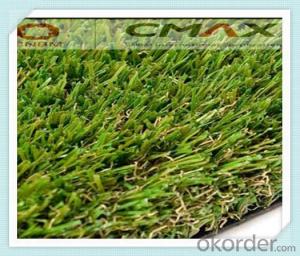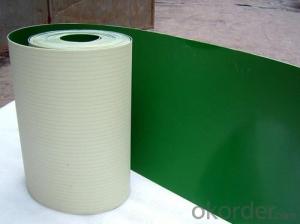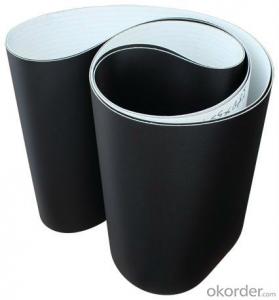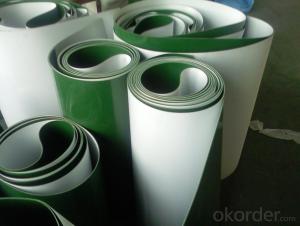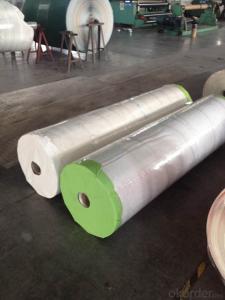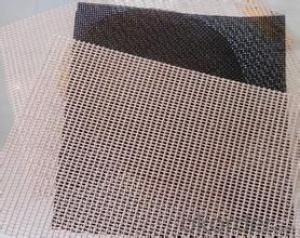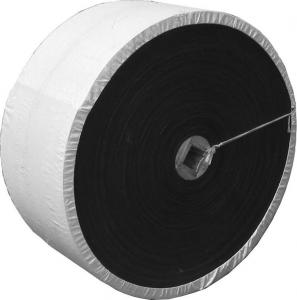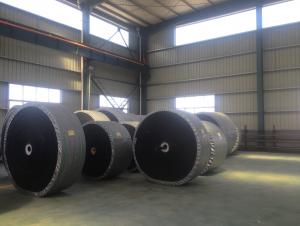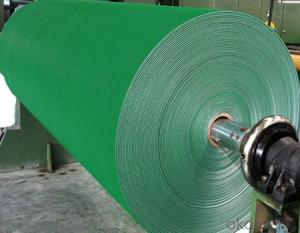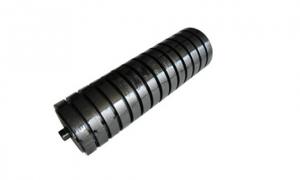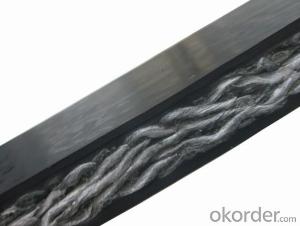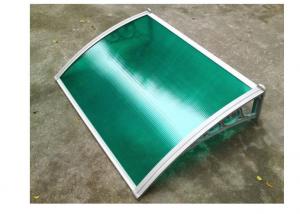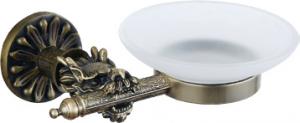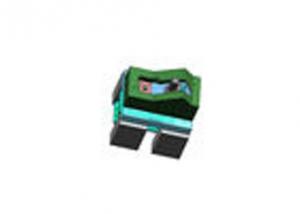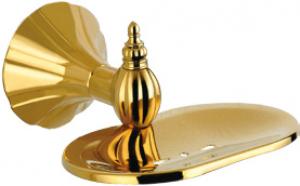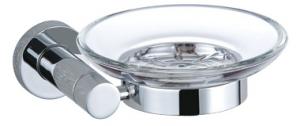PVG rubber Conveyor Belt
- Loading Port:
- China Main Port
- Payment Terms:
- TT OR LC
- Min Order Qty:
- -
- Supply Capability:
- -
OKorder Service Pledge
OKorder Financial Service
You Might Also Like
Specifications
the weight is light, saves the transportation of electricity,high tenacity and horizontal tear resistance.
PVG whole core flame retardant conveyor belt
1. Product composition: Whole core flame retardant conveyor belt, rubber belt core classics by whole a dipping, plasticizing, coating transition layer, and then the rolling joint upper and lower cover glue, then through curing and cooling. Up and down the product cover are nitrile rubber, can be used in Angle in below 20 degree Celsius water wet, dry environment can get better application.
2. Features& Benefits
2.1 High tenacity skeleton material
whole core conveyor belt skeleton materials using a variety of chemical fiber high tenacity and high quality, using the company advanced weaving structure, special multi-layer weave structure combined intoan organic whole, in order to achieve high tenacity and horizontal tear resistance, with the weight is light, saves the transportation of electricity.
2.2 Advanced impregnation technology whole core zone dipping technology, can make the PVC paste full penetration in the whole belt core impregnation process, so the paste and the whole belt core can form a whole, guarantee the impact resistance performance of the conveyor belt.
2.3 Performance of the rubber cover PVG whole core conveyor belt cover glue formula performance is excellent, in under the premise that guarantee safety performance also has excellent physical performance, best can give conveyor belt bearing layer of protection.
2.4 Excellent flame retardant performance Excellent flame retardant performance can ensure company whole core conveyer belt used in coal mine safety.
- Q: How do olive nets prevent soil erosion in the orchard?
- Olive nets are used to prevent soil erosion in orchards by creating a protective barrier over the soil surface. These nets help to reduce the impact of heavy rainfall, wind, and runoff, which are the main causes of soil erosion. By trapping the rainwater and preventing it from washing away the topsoil, olive nets help maintain the stability of the soil and prevent erosion. Additionally, these nets also act as a mulch, conserving moisture in the soil and reducing evaporation.
- Q: How does an olive net affect the overall crop yield in the olive grove?
- An olive net can significantly impact the overall crop yield in an olive grove. By placing the netting over the trees, it helps to protect the olives from birds, pests, and adverse weather conditions. This protection reduces the risk of damage, loss, or contamination of the olives, resulting in a higher yield. Additionally, the netting can also prevent the olives from falling prematurely, allowing them to fully ripen and mature before harvest. Therefore, an olive net positively contributes to the overall crop yield by ensuring a healthier and more abundant harvest.
- Q: Can olive nets be used for olive tree bonsai training?
- Yes, olive nets can be used for olive tree bonsai training. These nets can help shape and guide the growth of the tree while protecting it from birds and other animals.
- Q: Can an olive net damage the olive tree branches?
- Yes, an olive net can potentially damage the olive tree branches if it is installed or removed improperly. The netting can snag or tangle with the branches, causing them to break or become damaged. It is important to handle and install the netting with care to avoid any harm to the olive tree branches.
- Q: What products are plastic extrusion?
- Extrusion plastic products are as follows:One, PVC hard tubeTwo, PVC hoseThree polyolefin pipesFour polycarbonate (PC) tubeFive, polystyreneSix polypropyleneSeven, ABS sheet and boardEight, PPR pipe
- Q: Can olive nets be used for olive trees in coastal regions?
- Yes, olive nets can be used for olive trees in coastal regions. Olive nets are commonly used in olive groves to protect the falling fruits from hitting the ground and to facilitate easier harvesting. Coastal regions may have higher winds, so it is recommended to use a sturdy netting material and secure it properly to withstand the coastal conditions.
- Q: How does an olive net affect the overall weed control in the olive grove?
- An olive net can significantly improve weed control in an olive grove. By covering the ground around the olive trees, it prevents sunlight from reaching the soil, which inhibits weed growth. Additionally, the net acts as a physical barrier, preventing weed seeds from reaching the soil and germinating. This reduces the need for manual weeding or herbicide application, saving time and effort. Overall, the use of an olive net helps maintain a cleaner and weed-free environment in the olive grove.
- Q: Do olive nets require any special maintenance?
- Yes, olive nets require regular maintenance to ensure their effectiveness. They should be cleaned and inspected regularly to remove debris and prevent damage. Additionally, proper storage and handling is necessary to prolong their lifespan.
- Q: How much do olive nets cost?
- The cost of olive nets can vary depending on factors such as size, quality, and the supplier. It is recommended to check with different suppliers or conduct an online search to get an accurate estimate of current prices.
- Q: Do olive nets affect the appearance of olive trees?
- Yes, olive nets can affect the appearance of olive trees. When olive nets are placed over the trees to collect the olives during the harvesting season, they can change the overall look of the tree by covering its branches and obscuring the natural shape and foliage.
Send your message to us
PVG rubber Conveyor Belt
- Loading Port:
- China Main Port
- Payment Terms:
- TT OR LC
- Min Order Qty:
- -
- Supply Capability:
- -
OKorder Service Pledge
OKorder Financial Service
Similar products
Hot products
Hot Searches
Related keywords
